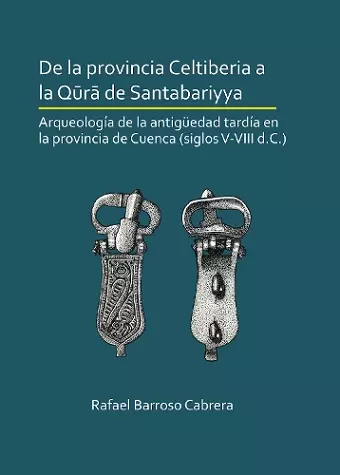De la provincia Celtiberia a la qūrā de Santabariyya: Arqueología de la Antigüedad tardía en la provincia de Cuenca (siglos V-VIII d.C.)
Format:Paperback
Publisher:Archaeopress
Published:11th Mar '19
Should be back in stock very soon

The central position of the province of Cuenca, Spain, was a decisive factor in its relationship with Toledo, the capital of the Visigothic kingdom. Also, its location meant that, from the middle of the 6th Century, it was directly affected by some of the most relevant historical episodes of those times: the foundation of the royal city of Reccopoli, the establishment of the Servitanus monastery, the transformation of Toledo as the metropolitan seat of the Carthaginian province and the military campaigns against the imperial forces. Parallel to this, archaeological excavations document a process of disrupting the old urban centres in favour of small populations within their municipal territory. This process was resolved with a shift of power centres towards other cities supported by the political power of Toledo: Toledo itself in the case of Segobriga, Reccopoli in the Arcavica’s case and Illunum to the detriment of Valeria. In this way, the ancient Roman cities were reduced to serve as a symbolic reference of the small villages that developed in the shadow of the old urban centres. This volume presents a historical and archaeological study of the province of Cuenca in Late Antiquity. The study concludes with an examination of the archaeological collection from the province, which has been divided into three large groups: monumental sculpture and epigraphic items, ceramic productions and metalwork arts. The first group is mainly constituted by the findings made in the excavations of Cabeza de Griego (Segobriga). Most of the pottery productions correspond to vessels placed as funerary deposits. Due to the absence of excavations, the ceramics for kitchen and storage use are hardly represented, whereas there is an overrepresentation of types destined for use as libations or offerings. Finally, most of the elements of industrial arts correspond to elements of the Latin-Mediterranean fashion or Byzantine style of the 7th Century. The almost total absence of materials corresponding to the Pontic-Danubian fashion also should be noted. | La posición central de la provincia de Cuenca ha sido el factor determinante en su relación con Toledo, la capital del reino visigodo. Esta situación fue la causa también de que, desde mediados del siglo VI, se viera directamente afectada por algunos de los episodios históricos más relevantes del momento: la fundación de la...
ISBN: 9781789690644
Dimensions: 290mm x 205mm x 31mm
Weight: 2010g
578 pages